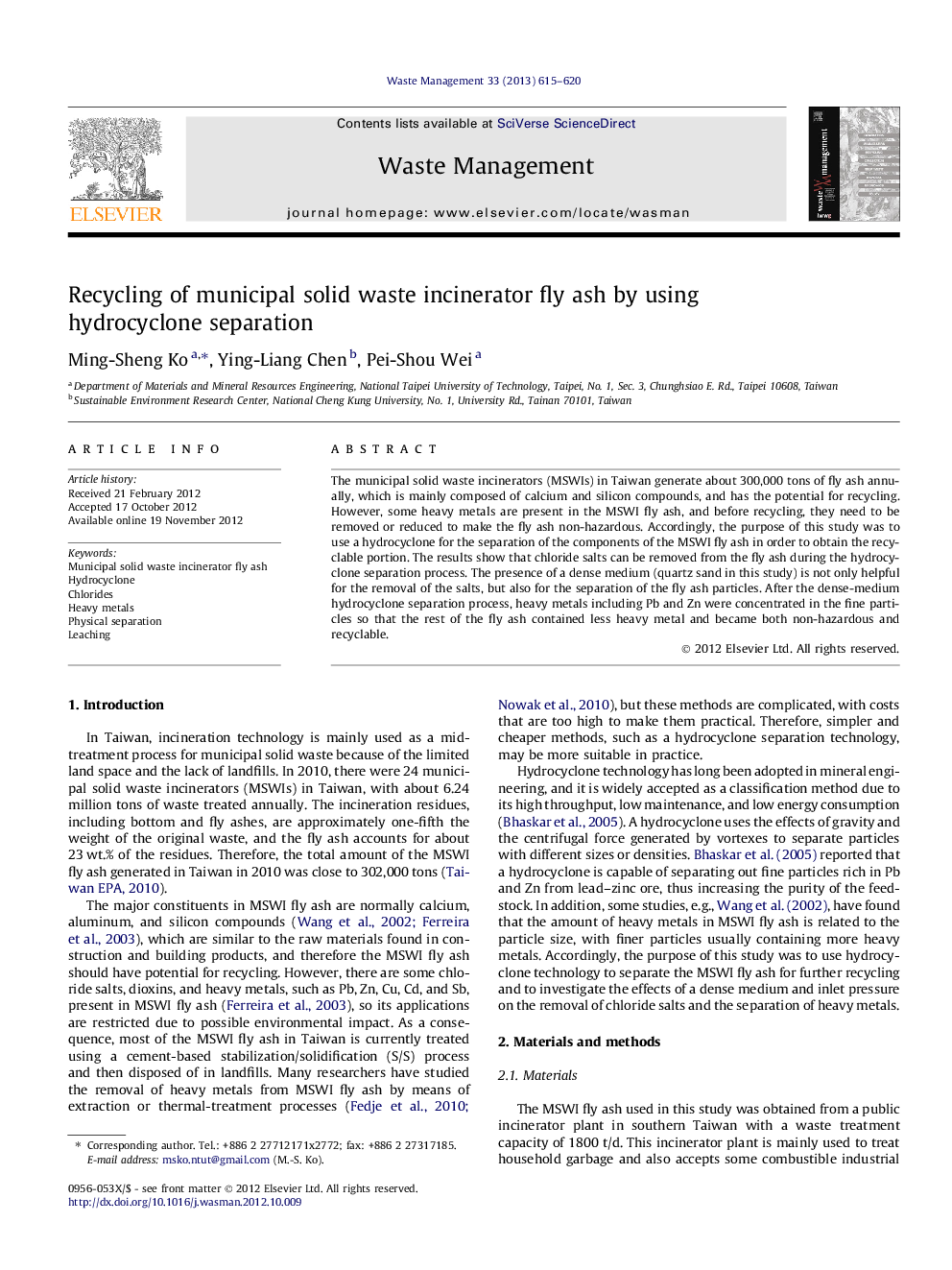| Article ID | Journal | Published Year | Pages | File Type |
|---|---|---|---|---|
| 6355501 | Waste Management | 2013 | 6 Pages |
The municipal solid waste incinerators (MSWIs) in Taiwan generate about 300,000 tons of fly ash annually, which is mainly composed of calcium and silicon compounds, and has the potential for recycling. However, some heavy metals are present in the MSWI fly ash, and before recycling, they need to be removed or reduced to make the fly ash non-hazardous. Accordingly, the purpose of this study was to use a hydrocyclone for the separation of the components of the MSWI fly ash in order to obtain the recyclable portion. The results show that chloride salts can be removed from the fly ash during the hydrocyclone separation process. The presence of a dense medium (quartz sand in this study) is not only helpful for the removal of the salts, but also for the separation of the fly ash particles. After the dense-medium hydrocyclone separation process, heavy metals including Pb and Zn were concentrated in the fine particles so that the rest of the fly ash contained less heavy metal and became both non-hazardous and recyclable.
⺠Municipal solid waste incinerator fly ash was abundant in chloride salts and heavy metals. ⺠A hydrocyclone separation process can effectively remove the salts. ⺠Pb and Zn were concentrated in fine particles of the fly ash after hydrocyclone separation. ⺠A dense medium was helpful for salt removal and fly ash separation. ⺠Using a dense-medium hydrocyclone separation can obtain the recyclable portion of the fly ash.
